Thanh Luan Nguyen
Beyond Diagonal RIS for ISAC Network: Statistical Analysis and Network Parameter Estimation
Feb 18, 2025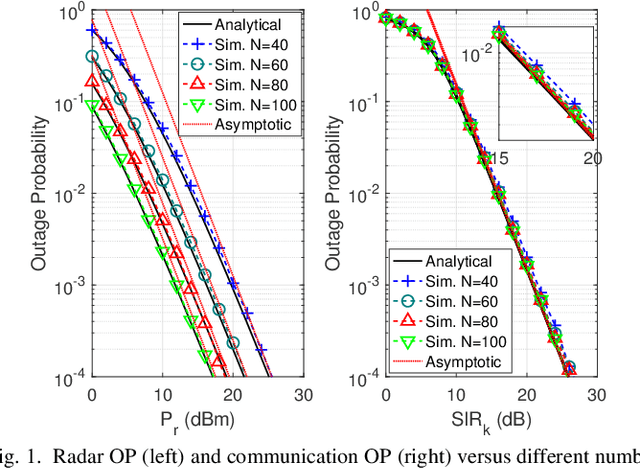
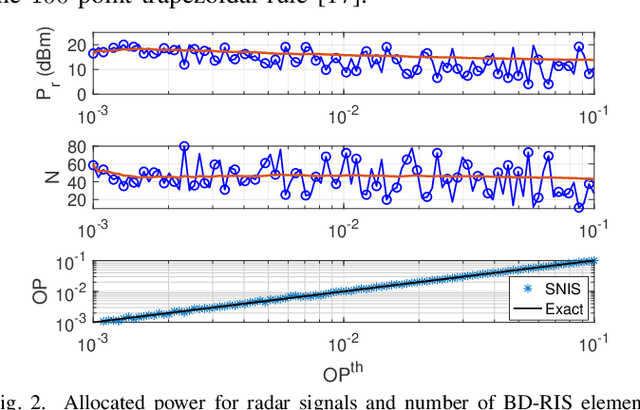
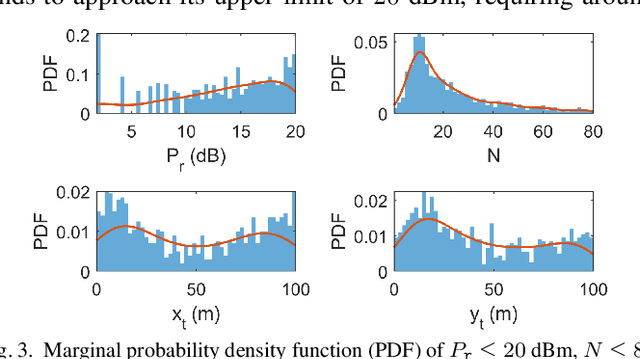
Abstract:This paper investigates the use of beyond diagonal reconfigurable intelligent surface (BD-RIS) with $N$ elements to advance integrated sensing and communication (ISAC). We address a key gap in the statistical characterizations of the radar signal-to-noise ratio (SNR) and the communication signal-to-interference-plus-noise ratio (SINR) by deriving tractable closed-form cumulative distribution functions (CDFs) for these metrics. Our approach maximizes the radar SNR by jointly configuring radar beamforming and BD-RIS phase shifts. Subsequently, zero-forcing is adopted to mitigate user interference, enhancing the communication SINR. To meet ISAC outage requirements, we propose an analytically-driven successive non-inversion sampling (SNIS) algorithm for estimating network parameters satisfying network outage constraints. Numerical results illustrate the accuracy of the derived CDFs and demonstrate the effectiveness of the proposed SNIS algorithm.
Ground-to-UAV and RIS-assisted UAV-to-Ground Communication Under Channel Aging: Statistical Characterization and Outage Performance
Aug 01, 2024Abstract:This paper studies the statistical characterization of ground-to-air (G2A) and reconfigurable intelligent surface (RIS)-assisted air-to-ground (A2G) communications in RIS-assisted UAV networks under the impact of channel aging. A comprehensive channel model is presented, which incorporates the time-varying fading, three-dimensional (3D) mobility, Doppler shifts, and the effects of channel aging on array antenna structures. We provide analytical expressions for the G2A signal-to-noise ratio (SNR) probability density function (PDF) and cumulative distribution function (CDF), demonstrating that the G2A SNR follows a mixture of noncentral $\chi^2$ distributions. The A2G communication is characterized under RIS arbitrary phase-shift configurations, showing that the A2G SNR can be represented as the product of two correlated noncentral $\chi^2$ random variables (RVs). Additionally, we present the PDF and the CDF of the product of two independently distributed noncentral $\chi^2$ RVs, which accurately characterize the A2G SNR's distribution. Our paper confirms the effectiveness of RISs in mitigating channel aging effects within the coherence time. Finally, we propose an adaptive spectral efficiency method that ensures consistent system performance and satisfactory outage levels when the UAV and the ground user equipments are in motion.
Fluctuating Line-of-Sight Fading Distribution: Statistical Characterization and Applications
Aug 01, 2024



Abstract:We introduce the fluctuating Line-of-Sight (fLoS) fading model, characterized by parameters $K$, $k$, $\lambda$, and $\Omega$. The fLoS fading distribution is expressed in terms of the multivariate confluent hypergeometric functions $\Psi_2$, $\Phi_3^{(n)}$, and $\Phi_3 = \Phi_3^{(2)}$ and encompasses well-known distributions, such as the Nakagami-$m$, Hoyt, Rice, and Rician shadowed fading distributions as special cases. An efficient method to numerically compute the fLoS fading distribution is also addressed. Notably, for a positive integer $k$, the fLoS fading distribution simplifies to a finite mixture of $\kappa$-$\mu$ distributions. Additionally, we analyze the outage probability and Ergodic capacity, presenting a tailored Prony's approximation method for the latter. Numerical results are presented to show the impact of the fading parameters and verify the accuracy of the proposed approximation. Moreover, we illustrate an application of the proposed fLoS fading distribution for characterizing wireless systems affected by channel aging.
Statistical Characterization of RIS-assisted UAV Communications in Terrestrial and Non-Terrestrial Networks Under Channel Aging
Jan 30, 2024Abstract:This paper studies the statistical characterization of ground-to-air (G2A) and reconfigurable intelligent surface (RIS)-assisted air-to-ground (A2G) communications with unmanned aerial vehicles (UAVs) in terrestrial and non-terrestrial networks under the impact of channel aging. We first model the G2A and A2G signal-to-noise ratios (SNRs) as non-central complex Gaussian quadratic random variables (RVs) and derive their exact probability density functions, offering a unique characterization for the A2G SNR as the product of two scaled non-central chi-square RVs. Moreover, we also find that, for a large number of RIS elements, the RIS-assisted A2G channel can be characterized as a single Rician fading channel. Our results reveal the presence of channel hardening in A2G communication under low UAV speeds, where we derive the maximum target spectral efficiency (SE) for a system to maintain a consistent required outage level. Meanwhile, high UAV speeds, exceeding 50 m/s, lead to a significant performance degradation, which cannot be mitigated by increasing the number of RIS elements.
Channel Characterization of UAV-RIS-aided Systems with Adaptive Phase-shift Configuration
Jan 30, 2024Abstract:This letter considers a UAV aiding communication between a ground transmitter and a ground receiver in the presence of co-channel interference. A discrete-time Markov process is adopted to model the complex nature of the Air-to-Ground (A2G) channel, including the occurrence of Line-of-Sight, Non-Line-of-Sight, and blockage events. Moreover, an adaptive phase-shift-enabled Reconfigurable Intelligent Surface (RIS) is deployed to combat A2G blockage events. Novel frameworks based on the shadowed Rician distribution are proposed to derive closed-form expressions for Ground-to-Air/A2G SINR' distributions. Numerical results show that RISs with large numbers of elements, e.g., 256 RIS elements, improve end-to-end Outage Probability (OP) and reduce blockages.
User Association Optimization for IRS-aided Terahertz Networks: A Matching Theory Approach
Jan 26, 2024



Abstract:Terahertz (THz) communication is a promising technology for future wireless communications, offering data rates of up to several terabits-per-second (Tbps). However, the range of THz band communications is often limited by high pathloss and molecular absorption. To overcome these challenges, this paper proposes intelligent reconfigurable surfaces (IRSs) to enhance THz communication systems. Specifically, we introduce an angle-based trigonometric channel model to evaluate the effectiveness of IRS-aided THz networks. Additionally, to maximize the sum rate, we formulate the source-IRS-destination matching problem, which is a mixed-integer nonlinear programming (MINLP) problem. To solve this non-deterministic polynomial-time hard (NP-hard) problem, the paper proposes a Gale-Shapley-based solution that obtains stable matches between sources and IRSs, as well as between destinations and IRSs in the first and second sub-problems, respectively.
Adaptive Decoding Mechanisms for UAV-enabled Double-Uplink Coordinated NOMA
Jun 27, 2022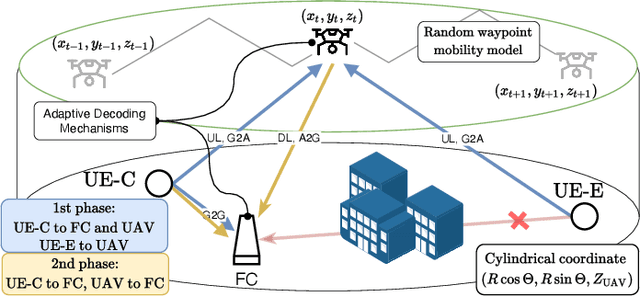
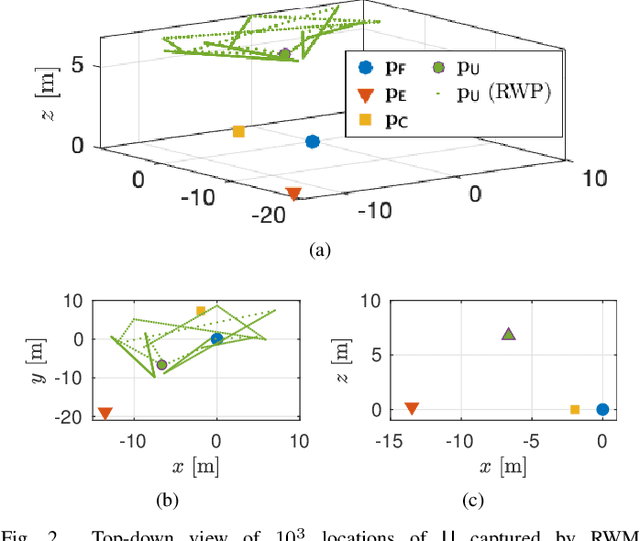
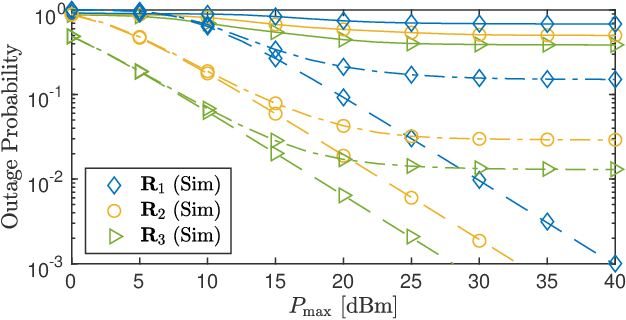
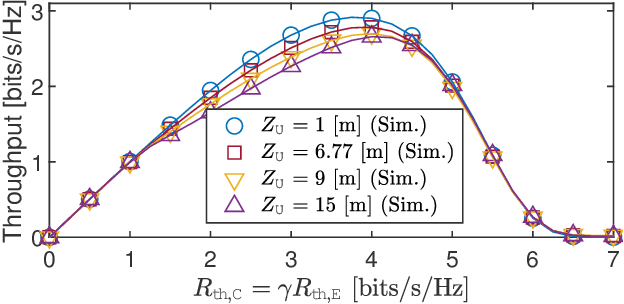
Abstract:In this paper, we propose a novel adaptive decoding mechanism (ADM) for the unmanned aerial vehicle (UAV)-enabled uplink (UL) non-orthogonal multiple access (NOMA) communications. Specifically, considering a harsh UAV environment where ground-to-ground links are regularly unavailable, the proposed ADM overcomes the challenging problem of conventional UL-NOMA systems whose performance is sensitive to the transmitter's statistical channel state information and the receiver's decoding order. To evaluate the performance of the ADM, we derive closed-form expressions for the system outage probability (OP) and throughput. In the performance analysis, we provide novel expressions for practical air-to-ground and ground-to-air channels while taking into account the practical implementation of imperfect successive interference cancellation (SIC) in UL-NOMA. These results have not been previously reported in the technical literature. Moreover, the obtained expression can be adopted to characterize the OP of various systems under a Mixture of Gamma (MG) distribution-based fading channels. Next, we propose a sub-optimal Gradient Descent-based algorithm to obtain the power allocation coefficients that result in maximum throughput with respect to each location on UAV's trajectory, which follows a random waypoint mobility model for UAVs. Numerical solutions show that the ADM significantly improves the performance of UAV-enabled UL-NOMA, particularly in mobile environments.
Aerial Reconfigurable Intelligent Surface-Aided Wireless Communication Systems
Jun 09, 2021
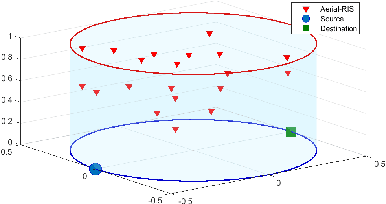
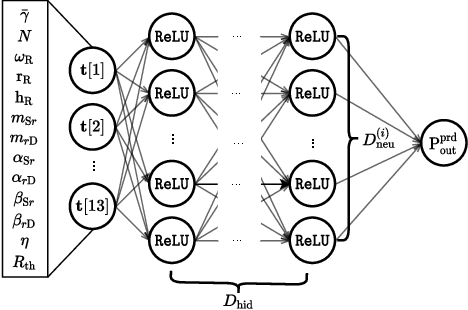
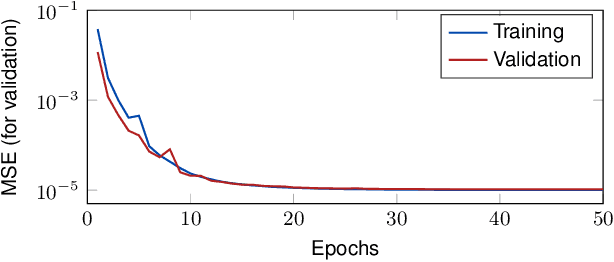
Abstract:In this paper, we propose and investigate an aerial reconfigurable intelligent surface (aerial-RIS)-aided wireless communication system. Specifically, considering practical composite fading channels, we characterize the air-to-ground (A2G) links by Namkagami-m small-scale fading and inverse-Gamma large-scale shadowing. To investigate the delay-limited performance of the proposed system, we derive a tight approximate closed-form expression for the end-to-end outage probability (OP). Next, considering a mobile environment, where performance analysis is intractable, we rely on machine learning-based performance prediction to evaluate the performance of the mobile aerial-RIS-aided system. Specifically, taking into account the three-dimensional (3D) spatial movement of the aerial-RIS, we build a deep neural network (DNN) to accurately predict the OP. We show that: (i) fading and shadowing conditions have strong impact on the OP, (ii) as the number of reflecting elements increases, aerial-RIS achieves higher energy efficiency (EE), and (iii) the aerial-RIS-aided system outperforms conventional relaying systems.
 Add to Chrome
Add to Chrome Add to Firefox
Add to Firefox Add to Edge
Add to Edge